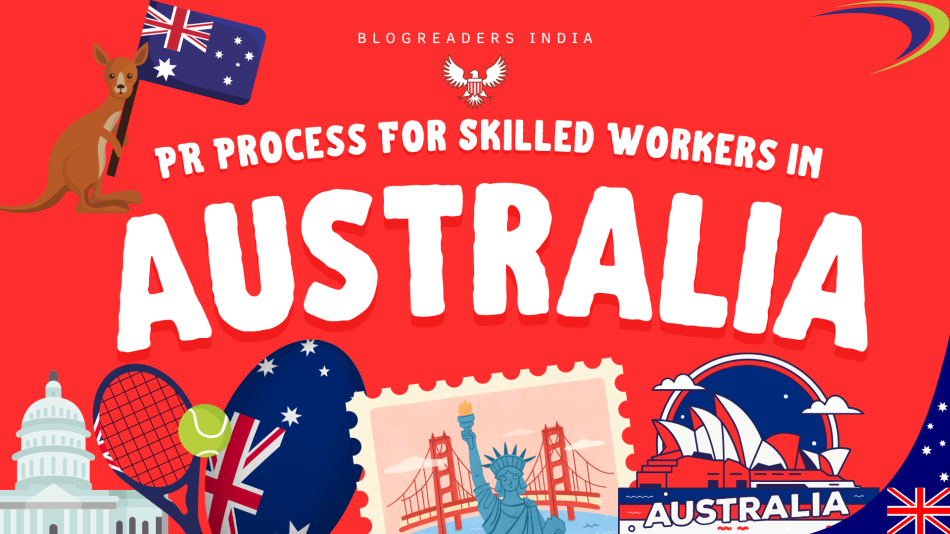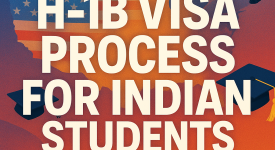The Australia PR process for skilled workers is a hot topic, especially in 2025. I’ve been through the grind myself (and yes, I made mistakes along the way), so let’s have a real chat about how it all works, what you need, and a few things I wish someone had told me before I started.
Why So Many Indians Are Eyeing Australia PR
First, let’s get this out of the way: Australia is a magnet for young, skilled folks—especially from India. The work-life balance, the pay, the lifestyle (and let’s not forget the beaches)—it’s all pretty tempting. But trust me, the Australia PR process for skilled workers isn’t a walk in the park. It’s more like a long, winding trek with a lot of paperwork, points, and patience.
I remember when I started, I thought, “How tough can it be? I’ve got a degree, some work experience, decent English…” Haha, little did I know. There’s a whole system behind it, and if you don’t know the rules, you’ll waste time (and money). So, let’s break it down.
Read More: H-1B Visa Process for Indian Students in 2025 – Full Guide
Section 1: The Eligibility Checklist – Are You Even Qualified?
First thing – your occupation must be on the relevant skilled occupation list. This sounds simple, but trust me, it’s not always straightforward. The lists change regularly, and sometimes occupations get removed without much warning.
Essential Eligibility Checklist:
- Age Requirements: You must be under 45 years old when you receive your invitation. This is non-negotiable, and I’ve seen people miss out by just a few months. If you’re approaching 40, you really need to fast-track your application because your points start dropping after that.
- Skills Assessment: This is probably the most stressful part of the entire process. You need to get your qualifications and work experience assessed by the relevant assessing authority for your occupation. Each occupation has a different assessing body, and they all have their own quirky requirements. For IT professionals, it’s usually ACS (Australian Computer Society), and let me tell you, their requirements can be quite specific about work experience and qualifications.
- English Proficiency: You need to prove your English skills through IELTS, PTE, or other approved tests. The minimum requirement is “Competent English” (IELTS 6.0 in each band), but honestly, you’ll need much higher scores to be competitive. I’d recommend aiming for at least 7.0 in each band to get decent points.
- Work Experience: You need at least three years of skilled work experience in your nominated occupation. But here’s the catch – it needs to be closely related to your nominated occupation and at an appropriate skill level. Generic work experience won’t cut it.
- Health & Character: Police clearance and a medical exam are mandatory. No shortcuts here.
Honestly, I messed up on the occupation part. I assumed my job title matched the SOL, but the actual job description matters more. Lesson learned: always check the details.
Section 2: The Points Table – How Many Points Do You Need?
Alright, here’s where it gets a bit math-y. The Australia PR process for skilled workers is all about points. You need at least 65 points to lodge an Expression of Interest (EOI), but higher is always better—think 80+ if you want a faster invite.
Points Breakdown:
- Age: Maximum 30 points (25-32 years old)
- English proficiency: Up to 20 points (Superior English)
- Skilled employment: Up to 20 points (8+ years)
- Educational qualifications: Up to 20 points (Doctorate)
- Australian study: 5 points (2+ years study)
- Community language: 5 points (NAATI credentialed)
- Professional year: 5 points (relevant program)
- State nomination: 5 points (subclass 190)
- Regional nomination: 15 points (subclass 491)
Here’s what I learned about maximising points: English proficiency is your biggest opportunity. The points system is where the real strategy comes in. When I first calculated my points, I was sitting at around 75 points, which seemed good until I realised that wasn’t nearly enough for my occupation. Let me break down how the system works and share some tactics that actually work.
| Criteria | Points (Range) |
| Age | 0–30 |
| English Skills | 0–20 |
| Work Experience | 0–20 |
| Education | 0–20 |
| Australian Study | 0–5 |
| Partner Skills | 0–10 |
| State Nomination | 5–15 |
Pro Tip: If you’re a single applicant, you might score higher. If you have a partner, their skills and English level can add or reduce points.
I spent hours calculating and recalculating my points, and honestly, it’s easy to get confused. That’s why I recommend using a reliable points calculator. (Psst—download one for free at the end of this post!)
Section 3: Step-by-Step Australia PR Process for Skilled Workers
Let’s get into the nitty-gritty. Here’s how the process usually goes:
1. Skills Assessment
First, get your skills assessed by the relevant authority. For IT folks, that’s usually the Australian Computer Society (ACS). They’ll check if your qualifications and experience match Australian standards. This step can take a couple of months, so start early.
2. English Language Test
Book your IELTS, TOEFL, or PTE. Aim for the highest band possible—every extra point helps. I thought my English was great, but the test format tripped me up. Practice with mock tests!
3. Expression of Interest (EOI)
Once you have your assessment and test scores, submit an EOI through SkillSelect. This is basically you raising your hand and saying, “Hey, Australia, pick me!” You’ll need all your documents ready.
4. State Nomination (Optional)
Some states offer extra points if you agree to live and work there. If you’re open to moving to places like South Australia or Tasmania, this can boost your chances.
5. Invitation to Apply
If your points are high enough, you’ll get an invitation to apply (ITA) for PR. This is the golden ticket. But don’t relax yet—there’s more paperwork ahead.
6. Visa Application
Now, you submit all your documents, pay the visa fees (heads up: it’s not cheap—check the latest fees here: visa fees), and wait for the decision. Processing times vary, but patience is key.
7. Medical & Police Checks
You’ll need to pass a health check and provide police clearance certificates from every country you’ve lived in for 12+ months.
8. Grant of PR
If all goes well, you’ll get your PR grant letter. Time to celebrate (and maybe start packing)!
Section 4: Common Mistakes and My Personal Goof-Ups
Let me be honest—there’s a lot of room for error in the Australia PR process for skilled workers. Here are a few mistakes I made (so you don’t have to):
- Assuming my job title matched the SOL: Always check the job description, not just the title.
- Underestimating the English test: Even if you’re fluent, practice the test format.
- Not preparing documents early: Some certificates take weeks to get. Start collecting them ASAP.
- Ignoring state nomination: I thought only big cities mattered, but state nomination can be a game-changer.
- Forgetting about visa fees: It’s a big chunk of money. Budget for it early (again, check the latest fees at blogreadersindia.in/visa-fees).
And hey, if you’re ever in doubt, don’t hesitate to ask for help. There are tons of forums, Facebook groups, and even consultants (though be careful—some are just out to make a quick buck).
Section 5: Free Points Calculator Download (CTA)
Alright, as promised—here’s your free points calculator. It’s a simple tool where you plug in your details and see your score instantly. No more guessing if you’re eligible or not! Just head over to Australian Government’s Points Calculator and grab it. Trust me, it’ll save you hours of confusion. This is the official tool from Australia’s Department of Home Affairs. It’s updated, accurate, and covers all the skilled migration subclasses (189, 190, 491, etc.)
Quick Recap: Australia PR Process for Skilled Workers
- Check your eligibility using the checklist above.
- Calculate your points—aim for 65+, but higher is better.
- Get your skills assessed and ace your English test.
- Submit your EOI and consider state nomination for extra points.
- Wait for your ITA, then lodge your visa application and pay the fees.
- Complete your health and police checks.
- Celebrate when you get your PR grant!
If you’re serious about moving to Australia, start early, stay organised, and don’t be afraid to ask questions. It’s a long journey, but totally worth it if you plan well. Good luck with your application.



